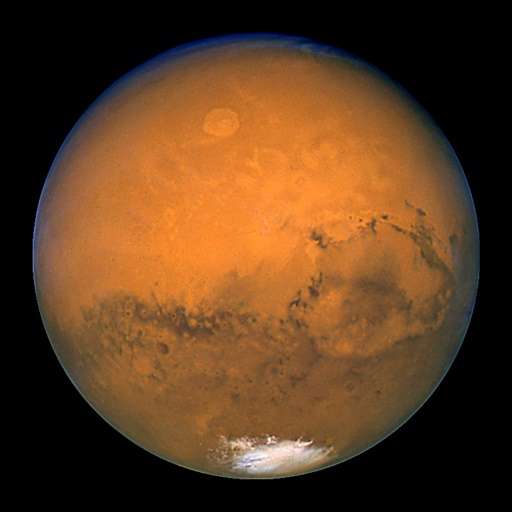Boiling water may be cause of Martian streaks, study says

The results of Earth-bound lab experiments appear to back up the theory that dark lines on Martian slopes are created by water—though in an otherworldly manner, scientists said Monday.
A team from France, Britain and the United States constructed models and simulated Mars conditions to follow up on a 2015 study which proffered "the strongest evidence yet" for liquid water—a prerequisite for life—on the Red Planet.
That finding had left many scientists scratching their heads as the low pressure of Mars' atmosphere means that water does not survive long in liquid form. It either boils or freezes.
Identifying water on the Red Planet is complicated by our limited understanding of natural processes under conditions so different to those on Earth.
In September last year, a team reported in the journal Nature Geoscience that curious lines running down slopes on the Martian surface in "summer" may be streaks of super-salty brine.
They said they had found evidence in the lines of "hydrated" salt minerals, which require water for their creation.
The lines, up to a few hundred metres in length and typically under five metres (16 feet) wide, appear on slopes during warm seasons, lengthen, then fade as they cool.
"Under certain circumstances, liquid water has been found on Mars," NASA concluded at the time.
For the latest study, also published in Nature Geoscience, researchers took to the lab to try and explain how water could have made the lines.
'Remarkably similar
The team, led by Marion Masse of the University of Nantes in France, included several of the authors of last year's headline-making study.
They placed a block of ice on a 30-degree plastic slope covered with loose fine-grained sand, and allowed it to melt in a chamber in which Martian pressure and summer temperature was recreated.
They repeated the experiment under Earth conditions to compare the processes.
Under Martian pressure, they found, melting ice produced a liquid which boiled vigorously as it flowed downslope and filtered into the sand.
The evaporating water vapour blasted grains upward, creating ridges which collapse onto themselves when they become too steep, forming channels.
"The morphologies produced on the sandy slopes in these experiments are remarkably similar to the streaks observed on Mars," Wouter Marra of the geosciences faculty of the University of Utrecht in the Netherlands commented on the study.
"This process in which unstable boiling water causes grains to hop and trigger slope failures may underlie some of the active landforms observed on the Martian surface."
Videos of the experiment can be seen below:
More information: M. Massé et al, Transport processes induced by metastable boiling water under Martian surface conditions, Nature Geoscience (2016). DOI: 10.1038/ngeo2706
Journal information: Nature Geoscience
© 2016 AFP





















